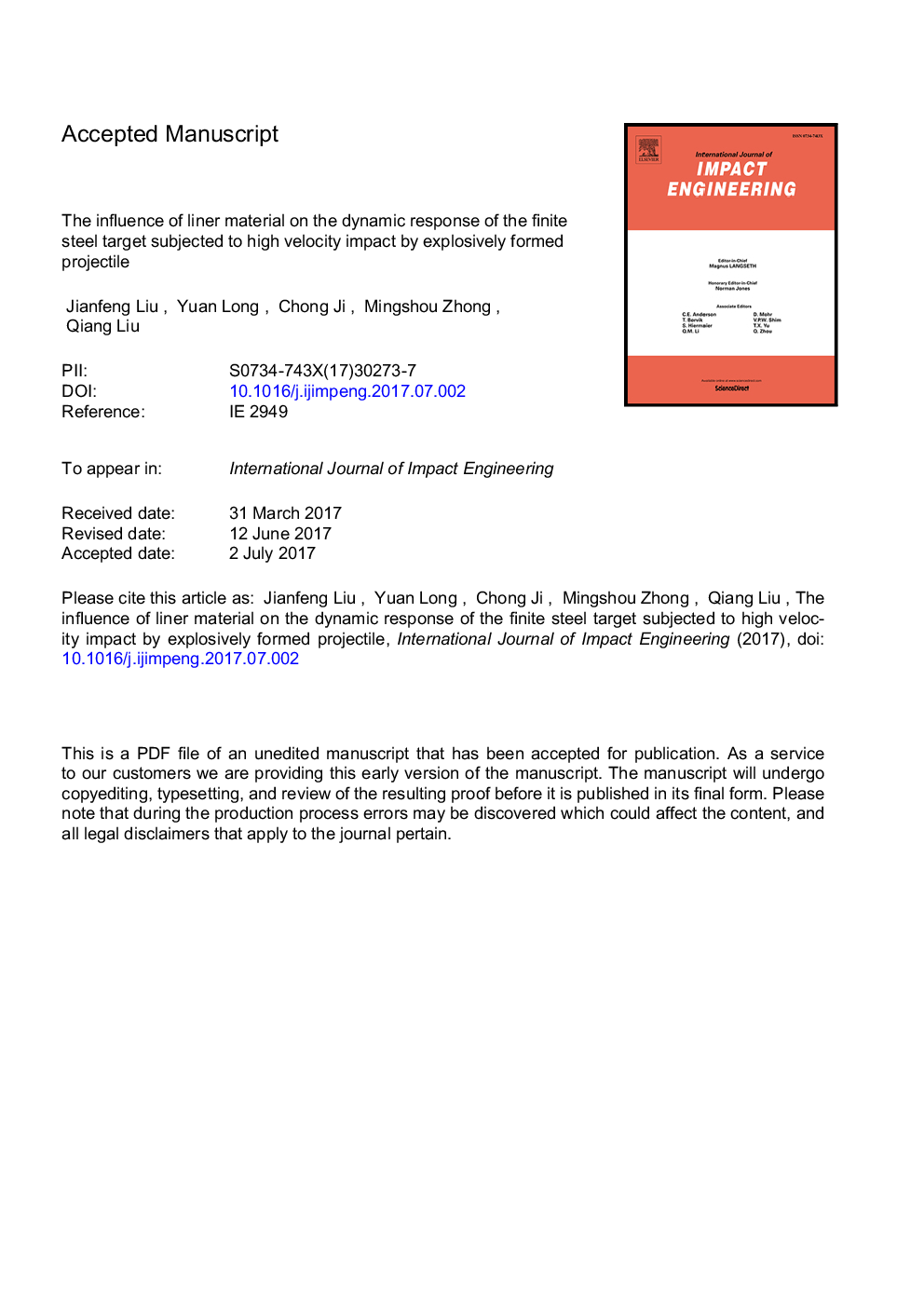| Article ID | Journal | Published Year | Pages | File Type |
|---|---|---|---|---|
| 5015438 | International Journal of Impact Engineering | 2017 | 17 Pages |
Abstract
Subjected to high velocity impact (collision pressure over 30â¯GPa) of copper and iron liner EFP, the finite steel targets experience the failure modes of plug and spall. Dynamic deformation and microstructure evolution of the finite steel targets are investigated in detail through ANSYS/LS-DYNA software and experiment methods including optical, scanning and transmission electron microscopy. Morphology analysis of fracture surfaces indicates that the copper EFP remainder plated to the crater wall shows extremely plastic deformation which consists of elongated parabolic dimples on the crater wall and the mild carbon steel target exhibits excellent brittle features that material fails mainly along the cleavage facets on the rear surface of target. The whole part of copper EFP remainder and partial material of steel target undergoes completely dynamic recrystallization, which displays an extreme plastic flow. The thickness of irregular DRX zone (30.4â¯Âµm) formed by the interaction between iron EFP and steel target is wider than the thickness of DRX zone (21.3â¯Âµm) formed by the penetration of copper EFP. Numerical simulation results indicate that the highest plastic strains at the crater wall can reach about 2 which can fully accommodate the grains deformation of steel target during the dynamic recrystallization process at strain rates of the order of 104â¯sâ1, and the average size of the refined DRX grains significantly decreases from 53.17â¯Âµm to approximately 200â¯nm. The refined grains in the DRX zone and elongated grains in the SPD zone distribute along EFP impact direction. Irreversible plastic deformation of grains extending from the crater wall to the matrix of steel target is consistent with the microhardness changes.
Related Topics
Physical Sciences and Engineering
Engineering
Mechanical Engineering
Authors
Liu Jianfeng, Long Yuan, Ji Chong, Zhong Mingshou, Liu Qiang,
